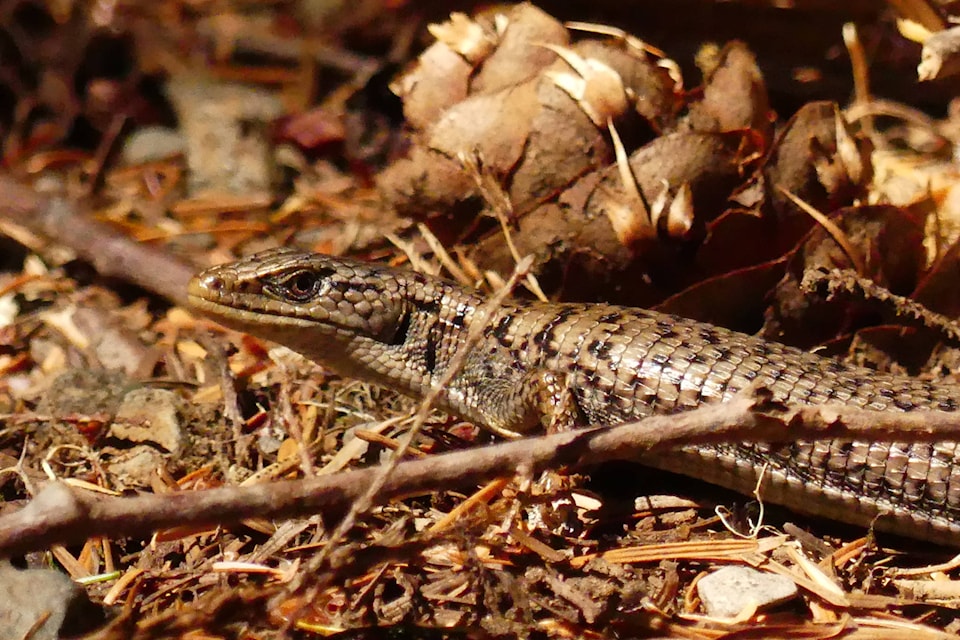SANDY MCRUER
SPECIAL TO THE NEWS
Alligators on Vancouver Island?!
Well, no, not really. But there is a creature called the Northern Alligator Lizard living here. It’s actually the largest lizard in Canada, but that doesn’t mean much when it reaches less than a foot long.
I stumbled across one a couple of weeks ago at the Nahmint Recreation Site. We were just approaching the beach when my wife caught some movement, saw it and asked me what it was. I had missed it because of the drabness of its colouring—brown and streaky. Underneath, it is a plain cream colour. I tell you this because it is the best way to distinguish it from the only other lizard on Vancouver Island—the European Wall Lizard. However, it only occurs on the most southern end of the Island and the Saanich Peninsula.
Both lizards share a common behavioral trait. It will shed its tail if attacked by a predator, and the tail will keep on wiggling while the animal scuttles off to safety. The tails do grow back and the lizard is able to live on with no harm done, although the new tail isn’t as long as it as the first tail. This is a common escape mechanism for small lizards and salamanders all over the world. Call it caudal autonomy if you want to impress your friends.
Some people think snakes are also lizards. Not really. They are both reptiles, but belong in separate orders: snakes and lizards.
The only other time I have found one of these lizards was at the trailhead to Fossil Provincial Park. It was sitting on a sunny pile of dirt and rocks by the parking area. I made the mistake of picking this one up. It excreted a foul-smelling liquid from its vent. My hands stunk until I found a washroom. Whew!
Alligator Lizards spend most of their time hiding under rocks, bits of bark or in crevices in rocks. Since they are cold-blooded, they also spend time sunning themselves. So while they are a forest creature, they prefer spending time on the edges of more open areas like rock bluffs or beaches along lakes.
They aren’t very common. And you won’t see them out and about until mid to late spring when the weather heats up. They stay in a cool, dry hibernaculum underground. When they emerge, they set about the business of mating. It’s a brutal affair which undoubtedly traumatizes the females as they are grabbed by the head, thrown around and mated with. It is said that this can go on for hours. I guess the rules in lizard society are a little different from us. The five or six babies are born alive—not hatched from eggs. The whole process leaves the females so exhausted that they won’t mate for another two or three years.
Despite the fact that they are not easily seen, I am sure there are lots of them around. So keep a look out for them in your rambles about the Valley.
